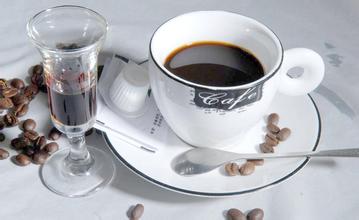Mexican Coffee Flavor taste Manor production area characteristics of boutique coffee beans introduction to Aldura coffee
The Teotihuacan civilization (Teotihuac á n) began around 200 BC, about in the middle of what is now Mexico, and was born after the demise of the Olmec civilization, about the same time as the Mayan civilization. the Teotihuacan people built a city of about 50,000 people between the first year of AD and 150, making it the earliest urban settlement in the whole American region, with many pyramids. However, unlike the genealogical context of other ancient Indian civilizations, the origin of the Teotihuacans is still an unsolved mystery, and no one can confirm that the civilization had written and documented it. Today, we know about the existence of this civilization, not only because they have left behind huge relics for analysis and proof, but also because some other surrounding civilizations of their time mentioned things about the Teotihuacans in their books or paintings. it's another key to reference. The Teotihuacans did not call themselves by this name, which was used by the Toltec, a successor civilization that existed in the region after the demise of the civilization, to call their predecessors the Nahuatl (a native Indian language of central Mexico), meaning "the land of man made by the gods". Although the ancient civilization disappeared long ago in the Toltek and even later Aztec times, they still regard the ancient city where the Teotihuacan once lived as a shrine, hence the name.
During the reign of Spain
In 1519, the Spanish invaded Mexico, and in 1521, Tenochtitl á n, the capital of Aztec, was conquered by the Tlaxcalteca, the main enemy of Spain and Aztec. But Spain did not completely conquer Aztec, but completed it two centuries later, and there were two main reasons why the Spaniards won.
Mexican coffee-growing areas are mainly concentrated in the southeastern highlands, near Guatemala. Most of the mountains in the south are volcanic areas, and the volcanic ash soil is not only conducive to the drainage of coffee roots, but also provides sufficient nutrients for the growth of coffee trees. Most of the coffee varieties planted are Kaddura, Tibica, bourbon, etc., and the treatment methods are mostly water washing treatment, which are classified according to altitude.
Coffee beans are mainly exported to the United States, and about 70% of the coffee is exported directly to the United States, which is used as a large amount of industrial beans, making it a coffee plantation in the United States. However, Mexico's annual output is not proportional to its position in the coffee world. Although the output is large, there is a lack of some representative boutique coffee with outstanding quality. So when it comes to the level of understanding of Mexican coffee, most people, including myself, will feel relatively strange. When we taste and discuss beans from excellent producing areas of various countries, Mexican coffee exists awkwardly like an outsider.
The Mexican coffee is ready.
The aromas of chocolate and cinnamon blend together to give off the smell of desert. Tasting such a cup of coffee, you seem to be walking through the gray-green cactus in the Mexican desert.
The most famous alcoholic drink in Mexico is tequila (Tequila). When Mexicans drink tequila, they lick a little salt on the tip of their tongue and then swallow the wine in a small glass. Tequila is a strong wine, the Mexican coffee made by adding this wine is very good, if you have enough courage, you might as well give it a try.
Tequila Mexican coffee and non-alcoholic Mexican coffee is basically true, but first pour a small cup of tequila at the bottom of the cup, and then pour in milk and coffee, preferably decorated with cream and cinnamon

Important Notice :
前街咖啡 FrontStreet Coffee has moved to new addredd:
FrontStreet Coffee Address: 315,Donghua East Road,GuangZhou
Tel:020 38364473
- Prev

Costa Rican Yersalo Coffee Flavor and taste introduction to the characteristics of boutique coffee beans in the manor area
The Government of Costa Rica has 21 ministries, namely: Ministry of Foreign Affairs and worship, Ministry of the President, Ministry of Internal Affairs, Police and Public Security; Ministry of Finance, Ministry of Foreign Trade, Ministry of economy, Industry and Commerce; Ministry of Planning and Economic Policy; Ministry of Health; Ministry of Science and Technology; Ministry of decentralization and Local Development; Ministry of Social Welfare and Family; Ministry of Public works and Transport; Ministry of Public Education; Housing and Resettlement
- Next

Flavor and taste characteristics of El Salvador Himalayan Coffee Manor
It is worth mentioning that the development momentum of Korean brand cafes in Kunming market is particularly strong in the past year or two. Take coffee with you as an example, it first entered the Kunming market at the end of 2012 and now has five stores. After the theme of ZOO COFFEE opened its first flagship store in the first city of South Asia at the end of last year, it also opened a second store at the end of June. According to its Yunnan District
Related
- Detailed explanation of Jadeite planting Land in Panamanian Jadeite Manor introduction to the grading system of Jadeite competitive bidding, Red bid, Green bid and Rose Summer
- Story of Coffee planting in Brenka region of Costa Rica Stonehenge Manor anaerobic heavy honey treatment of flavor mouth
- What's on the barrel of Blue Mountain Coffee beans?
- Can American coffee also pull flowers? How to use hot American style to pull out a good-looking pattern?
- Can you make a cold extract with coffee beans? What is the right proportion for cold-extracted coffee formula?
- Indonesian PWN Gold Mandrine Coffee Origin Features Flavor How to Chong? Mandolin coffee is American.
- A brief introduction to the flavor characteristics of Brazilian yellow bourbon coffee beans
- What is the effect of different water quality on the flavor of cold-extracted coffee? What kind of water is best for brewing coffee?
- Why do you think of Rose Summer whenever you mention Panamanian coffee?
- Introduction to the characteristics of authentic blue mountain coffee bean producing areas? What is the CIB Coffee Authority in Jamaica?

